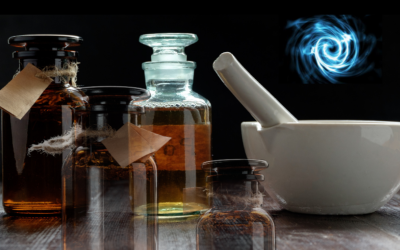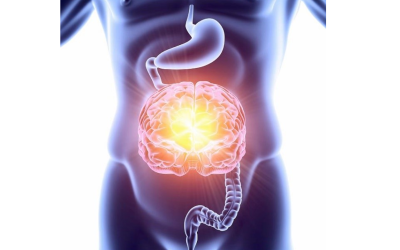I began developing the art of Spiritual PhytoEssencing (SPE) in the 1990′s. Having studied and taught scientific disciplines for many years, I naturally wanted SPE to be a very organized and disciplined approach to soul-level healing work.
It is my strong belief that, while the soul cannot be quantitatively and qualitatively assessed using conventional methods, the soul’s abstract nature requires that the imaginative consciousness employed to observe and address it be kept within constructive limits via a highly organized methodology. Lacking such organization, soul-level healing work commonly devolves into unreliable subjective speculation and ineffective therapeutics.
When I developed the SPE interview, data interpretation and blending protocol, I adapted some of its central features from classical homeopathy; another very creative yet highly disciplined healing art, which I have practiced for many years. One of these features is the development and use of a repertory.
What Is A Repertory?
One of the homeopath’s key tools is the homeopathic repertory: a reference book containing an index of mental, emotional and physical symptoms, organized by locations (e.g., Mind, Head, Heart, Skin, etc.). Found below each named symptom is the list of homeopathic remedies which have been noted as being potentially using for treating that symptom. Each of the various symptoms highlighted in the repertory and the remedies listed in relation to it is referred to as a rubric.
Every homeopathic remedy may be useful for a wide variety of symptoms. Also, there are hundreds of well-described homeopathic remedies. Rather than read the hundreds to thousands of pages in a given homeopathic materia medica (the reference book that alphabetically lists and describes the symptom pictures of many homeopathic remedies) in order to find a remedy to address a specific symptom, it is far simpler and faster to first look up the specific symptom in the repertory which provides a complete list of every remedy which is potentially useful for treating that symptom.
Once the homeopath notes the list of relevant remedies, he or she then investigates each of these using the detailed information provided in the materia medica. After this sequence of repertorization followed by materia medica work, the homeopath is then in a good position to determine which remedy is most appropriate in a given case.
Below I will describe the SPE Repertory Of Essential Oils. However, the use of it must first be framed within the context of a brief discussion of SPE’s theoretical premise and methodology.
Understanding The Theoretical Premise Of SPE
SPE is a synthesis of certain aspects of aromatherapy, doctrine of signatures, classical homeopathy, modern physiology, Kabbalah, philosophy, anthroposophical science, Chinese medicine, herbal medicine and folklore, principles of depth psychology, gemstone healing and color therapy.
Unlike homeopathy, Spiritual PhytoEssencing is not intended for use in disease treatment. Instead its focus is upon helping to resolve soul-level disharmony.
Ultimately, there is no separation between mind and body. The human organism is a fully integrated entity of mind, body and soul. The ongoing survival of this organism depends upon its capacity for self-healing which is a centrifugal process. In other words, the direction of cure is from the inside to the outside.
As the emotional level is a deeper level than the physical, our unexpressed emotions will be transferred from the emotional level to the physical level (i.e., centrifugal movement from inside to outside). In this way, emotional disharmony morphs into physical disease. The first imperative of the organism is self-healing. Whatever is not processed and resolved on the emotional level will ultimately have to be expressed on the physical level or those bottled-up energies will cause an emotional “meltdown.”
The physical body is vitalized and directed by higher forces, including what can be referred to as the spirit body. Ideally, the spirit body fully incarnates into living tissues and exerts an ongoing supervisory influence. When the human soul becomes preoccupied with the daily challenges of life, rational consciousness becomes estranged from the higher self and mired in “stuckness.” All chronic diseases have in common this quality of inertia.
Stuckness, a form of limitation, is a state of being that can only be associated with the finite realm. Therefore, overcoming stuckness requires the ongoing influence of the higher soul-that aspect of the soul that has never become estranged from its infinite source.
Like fingerprints, each soul is unique. Living within the context of one’s true soul-nature requires continuous connection with one’s higher self. Happiness is the key to wellness. No unhappy person can truly be well. In turn, the key to happiness lies in accepting, and living in accordance with, one’s authentic self and having it acknowledged by others.
The inability to actualize who we really are leads to anger, anxiety, frustration, depression, regret, etc. And these emotions are often repressed, becoming morbidly introverted emotional “cysts.” Our bottled-up emotional cysts hold us back physically as well as emotionally.
In addition to essential oils providing benefit on a physical level, they also exert a strong influence upon the psycho-spiritual plane. SPE employs customized essential oil blends to help an individual overcome the separation of the higher self, which lies at the core of emotional- and physical disharmony.
The SPE Method
The SPE blending protocol begins with an interview (called anamnesis-Latin for recollection) that provides the information, which when analyzed, enables the blender to identify the archetypes and themes that characterize the subject’s psycho-spiritual dynamics. Various aspects of these archetypes and themes are then proficiently matched with corresponding essential oils.
The resultant custom oil blend constitutes a plant-soul analogue of a given individual’s “soul-picture.” In other words, it is a soul-portrait in oils. It is this customized correspondence that encourages that individual’s soul to accept the homogeneous blend of plant-souls as a “reorganizing nucleus.” In essence, the custom blend serves as the unique matching key that can unlock the moribund potential within an analogous human-soul.
The central reference text in Spiritual PhytoEssencing is my Berkowsky’s Synthesis Materia Medica/Spiritualis of Essential Oils, which contains 120+ chapters with each devoted to the elaboration of the inner soul-nature of a specific essential oil. This process of elaboration involves the interweaving of information regarding plant characteristics, habitat, historical and folkloric associations and therapeutic action with a diverse variety of synchronicities derived from anthroposophical medicine, Kabbalah, homeopathy, gemstone healing, color therapy, etc.
Spiritual PhytoEssencing (SPE) Repertory Of Essential Oils
The specific mix of archetypal qualities and thematic expressions that are encoded into each soul gives rise to the various traits, behavioral modes and characteristic symptoms of emotional and physical disharmony we manifest in our lives.
Clearly, each person is a very complex mix of thoughts, aspirations, reactions, symptoms, etc. Each of these elements can provide insight regard the spiritual roots or thought forms embedded in the soul of which they are tangible images. In turn, this identification of each underlying soul-level archetype or theme leads to the selection of a corresponding oil for the custom blend.
When the goal is to produce a finely rendered custom blend, specific for only the person in focus, then the more effectively the blender can move from the general (e.g., fear) to the specific (e.g., fear of heights), the more deep-acting the blend. This is why the Spiritual PhytoEssencing Repertory Of Essential Oils is an invaluable tool when preparing soul-healing blends.
The SPE Repertory is a work in progress and not nearly complete. However, I have been working on it for over 10 years and it contains over 2000 rubrics. I develop the list of oils for each rubric using the SPE synthesis of certain aspects of aromatherapy, doctrine of signatures, classical homeopathy, modern physiology, Kabbalah, philosophy, anthroposophical science, Chinese medicine, herbal medicine and folklore, principles of depth psychology, gemstone healing and color therapy.
It is important to understand one of the main differences between the SPE and homeopathic repertories. The rubrics in a homeopathic repertory feature remedies that are relevant for directly treating the symptoms underneath which they are listed. On the other hand, the rubrics in the SPE Repertory are designed to highlight oils that may be relevant regarding the archetypal and thematic composition of the individual’s soul.
For example, let’s take a look at an excerpt from the HEART rubric in the SPE Repertory. “HEART” is the general rubric. The various symptoms listed below “HEART” are sub-rubrics which allow the blender to further refine his selection of certain oils based upon the subject’s history of heart symptoms.
HEART
Affections, general:
Allspice; ammi visnaga; angelica; anise; bergamot; bitter orange; black pepper; cajuput; calendula; camphor; caraway; carrot seed; cayenne; cedarwood; celery seed; cinnamon; coriander; cypress; davana; Douglas-fir; echinacea; eucalyptus; garlic; goldenrod; helichrysm; juniper; lavender; ledum; lemon; lemongrass; lovage; mastic; neroli; niaouli; nutmeg; palmarosa; patchouli; peppermint; ravensara; Roman chamomile; rosemary; sage; seaweed; spikenard; St. John’s wort; tea tree; thyme; ylang ylang
Constriction sensation:
basil; bitter orange; calendula; carrot seed; cedarwood; celery seed; coriander; cypress; eucalyptus; galbanum; goldenrod; helichrysm; hemp; hyssop; ledum; lemon; lemongrass; melissa; neroli; niaouli; nutmeg; oakmoss; peppermint; Roman chamomile; seaweed; thyme
Murmurs:
anise; basil; bitter orange; calendula; camphor; carrot seed; cedarwood; celery seed; cilantro; cistus; cypress; echinacea; goldenrod; helichrysm; jasmine; lavender; ledum; lemon; lemongrass; lovage; marjoram; mastic; melissa; myrtle; neroli; niaouli; oakmoss; oregano; patchouli; peppermint; Peru balsam; Roman chamomile; rose; rosemary; sage; sandalwood; eaweed; spikenard; thyme; tobacco; turmeric; valerian; ylang ylang
Palpitations from anxiety:
ammi visnaga; anise; basil; bitter orange; cajuput; calendula; carrot seed; cedarwood; celery seed; cilantro; clary sage; coffee; coriander; cypress; davana; dill; galbanum; ginger; goldenrod; helichrysm; hemp; hyssop; jasmine; laurel; lemon; lemongrass; mastic; melissa; neroli; niaouli; oakmoss; oregano; palmarosa; patchouli; peppermint; peru balsam; roman chamomile; rosewood; sage; seaweed; silver fir; tarragon; tea tree; thyme; turmeric; vetivert; yarrow; ylang ylang
Palpitations, night, at:
benzoin; bitter orange; calendula; carrot seed; cedarwood; celery seed; cilantro; coriander; cypress; eucalyptus; galbanum; ginger; goldenrod; helichrysm; hemp; jasmine; laurel; lemon; lemongrass; neroli; niaouli; oakmoss; patchouli; peppermint; roman chamomile; savory; seaweed; silver fir; thyme; tobacco; vetivert; yarrow
Tachycardia (rapid heart beat):
Anise; asarum; benzoin; bitter orange; blue chamomile; buchu; cajuput; camphor; caraway; cedarwood; celery seed; clove; cilantro; coffee; coriander; cypress; dill; Douglas-fir; eucalyptus; frankincense; galbanum; ginger; goldenrod; grapefruit; guaiac wood; helichrysum; hemp; hyssop; jasmine; laurel; ledum; lemon; lemongrass; lovage; mastic; melissa; myrtle; neroli; niaouli; oakmoss; onion; oregano; pathcouli; peppermint; Roman chamomile; rhododdendron; rose; rosewood; sage; seaweed; silver fir; spearmint; spikenard; St. John’s wort; tarragon; thuja; thyme; tobacco; turmeric; valerian; vetivert; yarrow; ylang ylang
The goal of the SPE Repertory is not to point the way to oils that may prove useful in the treatment of a particular symptom, although for practitioners of the physical healing arts, the oils listed may prove useful in that regard.
Instead, the blender is assuming that the quality of both the emotional and physical symptoms the subject has experienced over time, and the propensity to develop certain disordrers as opposed to others, are images of underlying archetypal and thematic components rooted in the soul.
Thus, an essential oil selected because it is identified with for instance, palpitations which occur at night, is not intended to directly treat that symptom but rather to use that symptom as a way of identifying specific aspects of that person’s unique soul-nature. In other words, the blender does not view the symptom as something to be directly treated but rather as a marker that shines light upon the character of that person’s root soul.
Accordingly, when we see angelica oil listed in the rubric “fear, of dogs” (see below) it is not meant to imply that angelica will likely prove effective to assuage that fear. Rather, it implies that the soul of an individual who has a prominent fear of dogs may contain a particular spiritual root that the inner nature of angelica may mirror.
To reiterate, in SPE, we don’t focus on the amelioration of symptoms but rather use symptoms as guides which point the way inward to the spiritual roots we seek to mirror with corresponding essential oils.
The SPE Repertory features an extensive array of emotional symptoms. Find below, an excerpt from the “FEAR” rubric. Note again how the sub-rubrics enable the blender to go beyond the fact that the person for whom he or she is blending is fearful to what specifically that person is afraid of.
FEAR
Of dogs:
angelica; basil; benzoin; black pepper; black spruce; buchu; catnip; cedarwood; celery seed; cilantro; cistus; coriander; elemi; eucalyptus; frankincense; geranium; ginger; helichrysm; ledum; lemon; lovage; mastic; monarda; neroli; patchouli; peppermint; pine; roman chamomile; rose; rosewood; savory; seaweed; silver fir; tagetes; tarragon; vetivert; violet; yarrow
Of drowning:
cacao; camphor; catnip; hemp; ledum; neroli; peppermint; sage; tarragon
Of eating:
basil; bergamot; helichrysm; patchouli
Of emotional hurt:
angelica; bitter orange; celery seed; cinnamon; cistus; coriander; fenugreek; frankincense; geranium; ginger; hyssop; lemon; lovage; monarda; neroli; parsley; patchouli; peppermint; Peru balsam; pine; Roman chamomile; rosewood; seaweed; silver fir; violet
Of failure:
angelica; anise; blue cypress; caraway; celery seed; cinnamon; cistus; cypress; Douglas-fir; frankincense; geranium; ginger; hyssop; jasmine; laurel; lemon; lovage; neroli; oakmoss; olive; onion; palmarosa; patchouli; peppermint; pine; roman chamomile; seaweed; silver fir; spearmint; tagetes; thyme; violet; yarrow
Of failure in business:
ammi visnaga; anise; balsam poplar; celery seed; dill; ginger; hyssop; laurel; oakmoss; olive; peppermint; ravensara; seaweed; silver fir; tarragon; yarrow
Of falling:
Ammi visnaga; anise; benzoin; black pepper; black spruce; blue chamomile; cajuput; cassie; catnip; cedarwood; coffee; cypress; elemi; eucalyptus; galbanum; ginger; monarda; myrtle; palmarosa; peppermint; Peru balsam; Roman chamomile; rose; rosewood; sage; sandalwood; seaweed; St. John’s wort; tarragon; tobacco; silver fir
Of ghosts:
camphor; cedarwood; cypress; eucalyptus; helichrysm; hemp; jasmine; lemon; mastic; oakmoss; parsley; patchouli; peru balsam; rosewood; sage; tarragon; turmeric; vetivert; yarrow
Of going to sleep:
ammi visnaga; camphor; carrot seed; cedarwood; celery seed; cilantro; coffee; geranium; ledum; nutmeg; seaweed; spikenard; turmeric
Of heights:
anise; bitter orange; calendula; carrot seed; cedarwood; celery seed; eucalyptus; goldenrod; helichrysm; jasmine; laurel; lemongrass; lovage; mastic; neroli; niaouli; onion; patchouli; peppermint; roman chamomile; seaweed; silver fir; yarrow
In the SPE method, the blender selects a limited number of rubrics from the repertory based upon the information provided during the interview. He or she then notes which essential oils appear repeatedly in the majority of the selected rubrics. A list of these oils is then compiled which are then considered to be candidates for inclusion in the custom blend. However, the blender must first thoroughly review the chapters in my Berkowsky’s Synthesis Materia Medica/Spiritualis of Essential Oils associated with each of the candidate oils before final selections for inclusion in the blend can be determined.
I have presented only the basics of the SPE oil selection process here. Experienced practitioners actually employ a great deal of additional nuanced cross-correlation and creative interpretation that is beyond the scope of this article. The more time one invests in the practice of the art of Spiritual PhytoEssencing, the deeper and more profound one’s understanding becomes of the oil’s used in soul-level healing work. In turn, the resultant blends become more powerful, dynamic and imbued with greater potential to help transform a person’s soul state from stuckness and fragmentation to self-actualization and wholeness.









